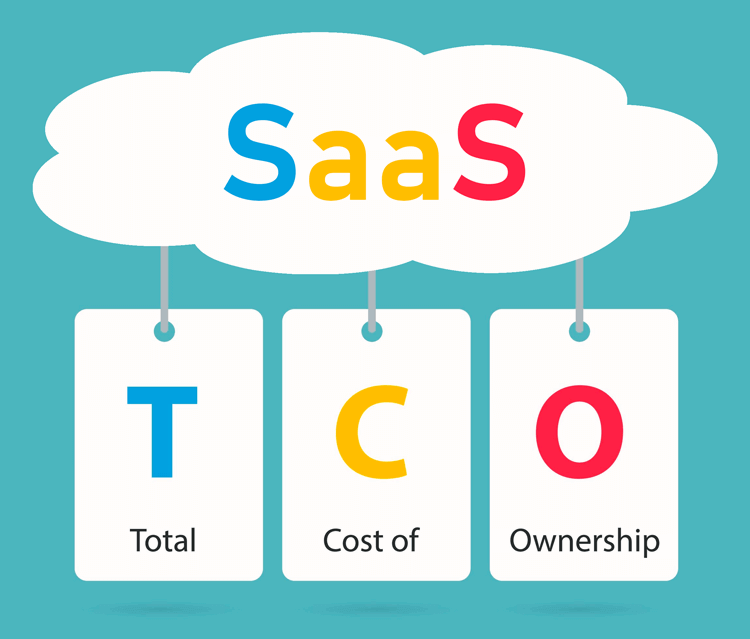What is Total Cost of Ownership: How to Calculate TCO and How It Applies to SaaS
What Does TCO Stand For?
The Total Cost of Ownership meaning can be something different depending on what you are referencing. For example, Gartner defines TCO in relation to IT as, "a comprehensive assessment of information technology (IT) or other costs across enterprise boundaries over time. For IT, TCO includes hardware and software acquisition, management and support, communications, end-user expenses and the opportunity cost of downtime, training and other productivity losses."
As everyday consumers, we often consider price one of the top indicators to justify a purchase. When we say "price," we mean the sticker price, but rarely do we factor in other costs involved with maintaining a product.
The same goes for organizations. They are often home to various software and services with an upfront cost. That upfront cost is likely an attractive number, strategically formulated to obtain a signed service agreement. Licenses and maintenance fees associated with the purchase are usually a small component of the overall Total Cost of Ownership (TCO). Where actual costs can begin to pile up are in the areas of labor to maintain software, infrastructure, and hardware.

What is TCO in Relation to Software Solutions?
For SaaS, the criteria for TCO varies from other typical situations.
Essentially, it is the total cost that you, as an organization, will incur for using a SaaS product over a period of time.
Here are a few components of TCO in relation to software solutions:
- Software acquisition
- Management and maintenance
- External support
- Training
- Downtime
- Monthly or yearly subscription fees
TCO Starts with Acquisition Costs
Organizations of all types should conduct a TCO calculation prior to considering a new SaaS product. Before going into a calculation, there should be a TCO analysis, where your organization poses questions about acquisition costs. Some of the more essential inquiries can look like this:
- Is there a cost for additional admin licenses?
- Is there a cost for client licenses?
- What are the operating system software requirements?
- What databases are supported?
You can create your own acquisition cost checklist by reading this white paper, which includes several essential questions to consider.
Total Cost of Ownership Template for SaaS
Ready to calculate total cost of ownership? Calculating true total ownership cost can be a tedious process, though it is necessary. Before sending your IT team out to solicit new SaaS products, be sure they have a standardized template of data to look for beyond the sticker price.
There are simple formulas for it. It is important to remember that while you can calculate TCO using a formula, the number should only be used as a guide. SaaS can be unpredictable, with extra costs springing up based on the needs of your organization, or unforeseen pricing increases implemented by a provider.
If you are looking for a simple total cost of ownership template, then rockcontent has you covered. Their example looks like this:
Example 1: Initial cost (I) + maintenance cost (M) - remaining costs (R) = TCO
If you want to get a bit more specific, then you might want to incorporate more components into the calculation. This is likely a good idea when dealing with SaaS. A more encompassing calculation would look like this:
Example 2: Initial cost (I) + operation cost (O) + maintenance cost (M) + downtime cost (D) + production cost (P) - remaining value (R) = TCO
In both calculations, initial cost refers to the sticker price you see when first purchasing a software. The maintenance cost refers to fees involved in regular maintenance — i.e. monthly system tuning that you are aware of and can build into the TCO calculator formula. Remaining cost is the long-term price of the asset, factoring in devaluation. You should base the remaining value off of a certain number of years — i.e. 2, 5 or 10 years.
Pro tip: Although not directly related to the cost of a software, it will be important that you factor in the cost of training employees. As an example, Giva's software offerings deploy in days, and can be learned by staff in an hour or less. This saves your organization time and money, perhaps resulting in a TCO reduction. The more complex the software is, the longer you must pay your employees to learn it. This also takes away time that you could be using that software and all of its benefits in the field.
Best Practices to Calculate Software-Related TCO Thoroughly
Whether you are implementing new software or replacing something older, it is important to calculate TCO. It is a thorough process, but one that can help with budgeting (unless money is not an object to your organization). A few critical areas to consider in your total cost of ownership example would be:
- Date range: Specify a date for your cost analysis. This can be different from organization to organization, but looking 3-5 years out is a good rule of thumb.
- Existing costs: Factor existing costs into your analysis. Although the cost to purchase, implement, and run a software may seem attractive, does it put you "over-budget" when looking at other software and expenses you already have on-site? This may be a good opportunity to look into workplace efficiencies.
- Examine risk: You may be aware of risk, but it can often be unpredictable when it comes to timing. For example, software downtime can last minutes, hours, and sometimes days. What would each scenario cost your organization? What is the track record of your software organization's "uptime?" That will be an important question to ask to better forecast risk.
- Migration: Are you migrating from one software to another? There may be costs involved. Be sure you are aware of costs to break a contract with a current provider and any fees involved in transferring data from one platform to another.
Pro tip: Trying to keep software in the same ecosystem can save you money. It is also easier to sync and manage if a device is lost or stolen. A great example of this is Apple users who purchase iPhones, iPads, and Macbooks, with all data synced and managed in iCloud, the company's cloud storage service.
The Bottom Line: Why TCO Matters
Understanding TCO is critical to your organization for a variety of reasons:
- First and foremost, it will determine the economic significance of purchasing and implementing new software.
- Next, it will help determine ongoing costs and at what frequency those occur.
- The last point, but one that seems to be overlooked, is determining the return on investment (ROI). So, as an example, you have calculated that the TCO for new software at your organization to be 2 million dollars, but the ROI would be 15 million dollars. These numbers make the implementation seem like a worthwhile investment, despite the steep upfront cost.
Calculating TCO and ROI will depend on the type of organization you operate and the behaviors of your clients.





